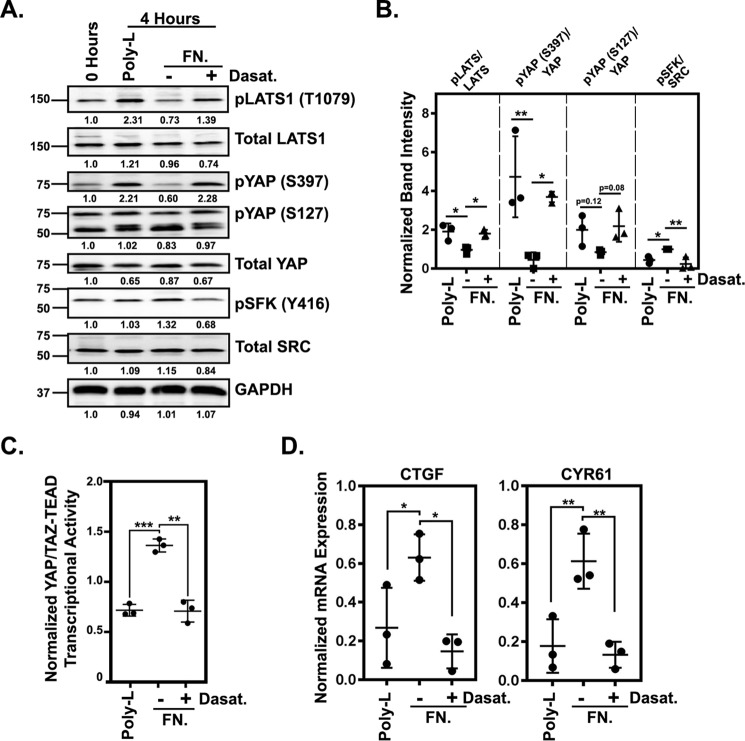Figure 5.
Cell-ECM adhesion promotes YAP/TAZ activity in an SRC-dependent manner. A, a representative set of Western blots from A375 cells following adhesion assays (see “Experimental procedures”) in which the cells were plated on fibronectin (FN) or poly-l-lysine for 1 h and then treated with DMSO or 500 nm dasatinib and cultured for an additional 3 h. Band intensities, normalized to the sample collected at 0 h, are indicated below each blot. B, quantification of three separate experiments performed as in A. For each, band intensities for the fibronectin with and without dasatinib and poly-l-lysine samples were normalized to the 0-h sample and then to GAPDH. Then the ratio of phosphorylated to total protein was calculated and plotted. C and D, adhesion assays with A375 cells plated on fibronectin or poly-l-lysine for 1 h and then treated with DMSO or 500 nm dasatinib and cultured for an additional 6.5 h before being assayed for YAP/TAZ-TEAD transcriptional activity (C) or by qPCR (D). All samples in C and D were normalized to a starting sample collected at 0 h. Scatter plots show mean ± S.D. (error bars), where each dot is an independent experiment. Statistical significance was tested using one-way ANOVA with Dunnett's multiple-comparison test (B and D) and Student's t test with Bonferroni correction for multiple comparisons (C). *, p ≤ 0.05; **, p ≤ 0.01; ***, p ≤ 0.001.

